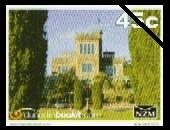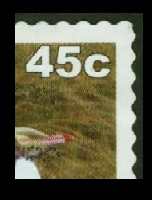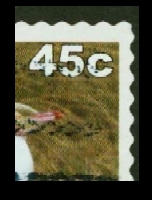An Internet
Stamp Catalogue
Reference Page
New Zealand Mail and Postie's Choice Stamps
Generic Series
ANI - Animals Series
CAD - Cats and Dogs Series
XMA - Christmas Series
ROS - Roses Series
NGE - North Island Generic Series
SGE - South Island Generic Series
ZGE - New Zealand Generic Series
Regional Series
NLD - Northland Series
AKL - Auckland Series
HOW - Howick Village Series
FRC - Franklin Country Series
HUN - Huntly Series
WKT - Waikato Series
HAM - Hamilton Series
CAM - Cambridge Series
OTO - Otorohanga Series
WTO - Waitomo Series
NPL - New Plymouth Series
HAW - Hawera Series
COR - Coromandel Series
BOP - Bay of Plenty Series
ROT - Rotorua Series
TAU - Taupo Series
WRA - Wairoa Series
HAB - Hawkes Bay Series
EKE - Eketahuna Series
TAR - Tararua Country Series
HUV - Hutt Valley Series
WLG - Wellington Series
NEL - Nelson Series
PIC - Picton Series
BUL - Buller Series
WLD - Westland Series
HAS - Hanmer Springs Series
KAI - Kaikoura Series
CHC - Christchurch Series
ASH - Ashburton District Series
GER - Geraldine Series
CSI - Central South Island Series
WNK - Wanaka Series
AWT - Arrowtown Series
QTN - Queenstown Series
QAW - Queenstown, Arrowtown and Wanaka Combined Series
COT - Central Otago Series
DUN - Dunedin Series
GOR - Gore Series
SLD - Southland Series
Advertising Series
BCH - Beach Hop Series
FSA - Food Safety Series
MAM - Maritime Museum Series
QLT - Quilting Series
RES - Resene Series
How to use this site
Arrangement
It has not been possible to arrange this site in chronological order because there are a large number of series running concurrently. To organise these stamps, I have made a completely arbitrary division of them into three main categories:
Advertising Series - for specific businesses and charities;
Generic Series - cats, dogs, birds, roses and scenic stamps from booklets and coils which are not specific to any one area;
Regional Series - Stamps which are issued to promote a specific town, city or region.
Within each of these classes, stamps are arranged alphabetically, with the exception of the Regional Series, which are arranged approximately geographically: north to south, east to west.
Catalogue Numbers
First please note that there is a considerable amount of gaps in the numbering system, both in the numerical and in the alphabetical areas. This does not indicate that more stamps exist; I have left gaps so that, in the case of any additional printings being reported to me, they can be accommodated in the system without my having to renumber existing listings. Any renumbering of stamps within a page will be referred to on the page itself, and it will become a new edition; and an archive of the last version of the previous edition will be kept and linked to.
Prefixes: A prefix refers to the series of the stamp. Each series has its own prefix. See the index for what they mean.
Numbers: Each major design type is given its own number. A prefix plus a number should normally be sufficient for a "simplified" listing of a stamp.
Suffixes: Each printing, or distinct change of design within a printing, is given its own suffix. Printings are listed by the month of printing (assumed; deduced from the serial number) and design changes within a printing are described and depicted in appendices to the listings.
Bracketed numbers: Some booklets contain two or more examples of an otherwise identical design, with the only difference between these stamps being the serial number, or some other distinguishing feature. It is to be assumed that, in any booklet containing more than one stamp of the same design, each stamp can be differentiated by some minor design feature, as it appears that the NZ Mail logo and text is applied to stamp designs individually within the booklet and stamps can often be differentiated where a complex part of the design is behind the logo or text. All stamps which appear more than once in the same booklet are differentiated by the use of a bracketed number after the first suffix. Where the various stamps are readily distinguishable and not by just a serial number, these differences are described and depicted in an appendix to the listings.
Use of these catalogue numbers: The catalogue numbers in these listings may be used both for commercial and for non-commercial purposes, subject to certain restrictions. See here for more information on the licensing of catalogue numbers.
Sample catalogue listing showing how information is presented
 |
Most designs are illustrated; this includes changes of face value and changes of text and lettering (with the exception of minor matters of font and font size, and minor error corrections). |
| DUN120 | The stamp catalogue number is listed under each stamp. |
|---|---|
| Larnach Castle | Information about the design (where known) is listed under the design and catalogue number. |
| Series | Month | Notes | DUN B12 | DUN120 | DUN121(1) | DUN121(2) | Data on the various minor varieties of each stamp is stored as a table. |
|---|---|---|---|---|---|---|---|
| f | 11/05 | Earliest known printing at 45c rate | NZM 0056 | 0970 | 0971 | 0972 | Numbers shown here are those of the serial number on the lower right corner of each stamp. See below for the meanings of the colour coding of each number. |
| r | 08/06 | NZM 0056 | 0970 | 0971 | 0972 | ||
| s | 08/06 | Subsequent printing with redrawn designs. See Appendix 1 | NZM 0056 | Spaces left empty of serial numbers are those for which I have no reason to believe a stamp even exists. | |||
| Letters shown in this column are the suffix added to the catalogue number to denote a particular printing date or minor variety. | Month and year dates shown here are the month and year date shown next to the serial number at the lower right of each stamp. | Additional information about a printing is shown here where appropriate. | Serial numbers shown in blue are of stamps which have been reported to me, but which I have not seen myself. | Serial numbers shown in red are ones which I have deduced to exist, from knowledge of other stamps of the same and similar printings, but which have not been reported to me. | Serial numbers shown in black are ones which I have been able to verify, by being in possession of such a stamp and viewing the stamp with a magnifier to confirm the printing date and serial number. | Where they appear in the same booklet or printing, some stamps which differ from other stamps only by their serial number are listed with a bracketed number after the first suffix. |
 |
 |
Where there is no other way of easily differentiating between them, minor varieties are illustrated in appendices. |
| DUN127r | DUN127s | The catalogue number applicable to each minor variety is shown here. |
|---|---|---|
| (Enlargement) Note face value distant from head of penguin |
(Enlargement) Note face value closer to head of penguin |
An explanation of such differences is also given. |
Note on illustrations
All illustrations shown on this site are scanned from stamps I had in my possession at the time. Most of these are used stamps, and any scans of unused stamps have been defaced. Each stamp is scanned at 300 dpi and reduced to 40% of its original size for presentation here. Some "enlargements" of minor design differences are not reduced in size, but instead are cropped to highlight the part of the design showing the difference in type.